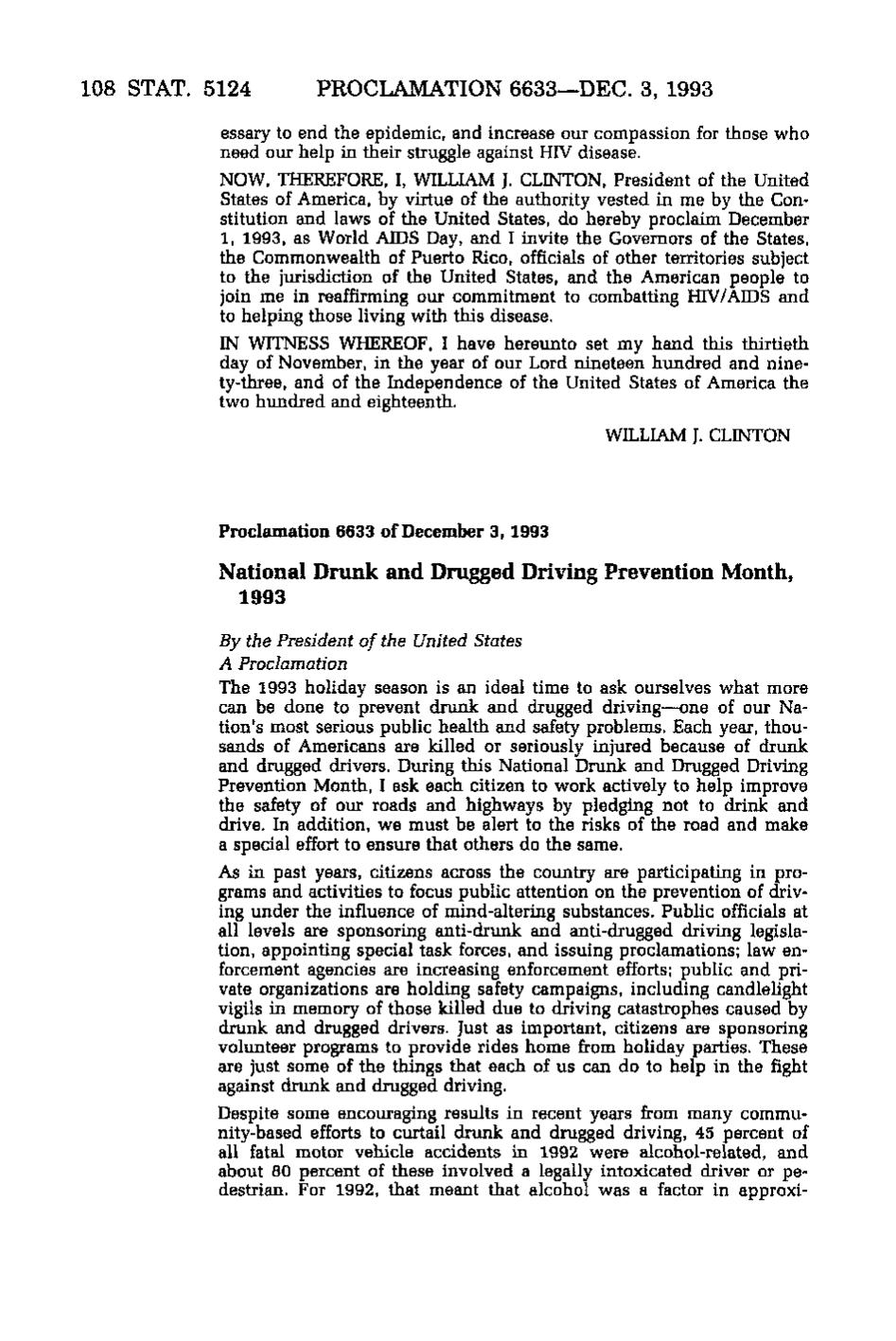108 STAT. 5124 PROCLAMATION 6633—DEC. 3, 1993 essary to end the epidemic, and increase our compassion for those who need our help in their struggle against HIV disease. NOW, THEREFORE, I, WILLIAM J. CLINTON, President of the United States of America, by virtue of the authority vested in me by the Constitution and laws of the United States, do hereby proclaim December 1, 1993, as World AIDS Day, and I invite the Governors of the States, the Commonv^ealth of Puerto Rico, officials of other territories subject to the jurisdiction of the United States, and the American people to join me in reaffirming our commitment to combatting HIV/AIDS and to helping those living with this disease. IN WITNESS WHEREOF, I have hereunto set my hand this thirtieth day of November, in the year of our Lord nineteen hundred and ninety-three, and of the Independence of the United States of America the two hundred and eighteenth. WILLIAM J. CLINTON Proclamation 6633 of December 3, 1993 National Drunk and Drugged Driving Prevention Month, 1993 By the President of the United States A Proclamation The 1993 holiday season is an ideal time to ask ourselves what more can be done to prevent drunk and drugged driving—one of our Nation's most serious public health and safety problems. Each year, thousands of Americans are killed or seriously injured because of drunk and drugged drivers. During this National Drunk and Drugged Driving Prevention Month, I ask each citizen to work actively to help improve the safety of our roads and highways by pledging not to drink and drive. In addition, we must be alert to the risks of the road and make a special effort to ensure that others do the same. As in past years, citizens across the country are participating in programs and activities to focus public attention on the prevention of driving under the influence of mind-altering substances. Public officials at all levels are sponsoring anti-drunk and anti-drugged driving legislation, appointing special task forces, and issuing proclamations; law enforcement agencies are increasing enforcement efforts; public and private organizations are holding safety campaigns, including candlelight vigils in memory of those killed due to driving catastrophes caused by drunk and drugged drivers. Just as important, citizens are sponsoring volunteer programs to provide rides home from holiday parties. These are just some of the things that each of us can do to help in the fight against drunk and drugged driving. Despite some encouraging results in recent years from many community-based efforts to curtail drunk and drugged driving, 45 percent of all fatal motor vehicle accidents in 1992 were alcohol-related, and about 80 percent of these involved a legally intoxicated driver or pedestrian. For 1992, that meant that alcohol was a factor in approxi-
�
